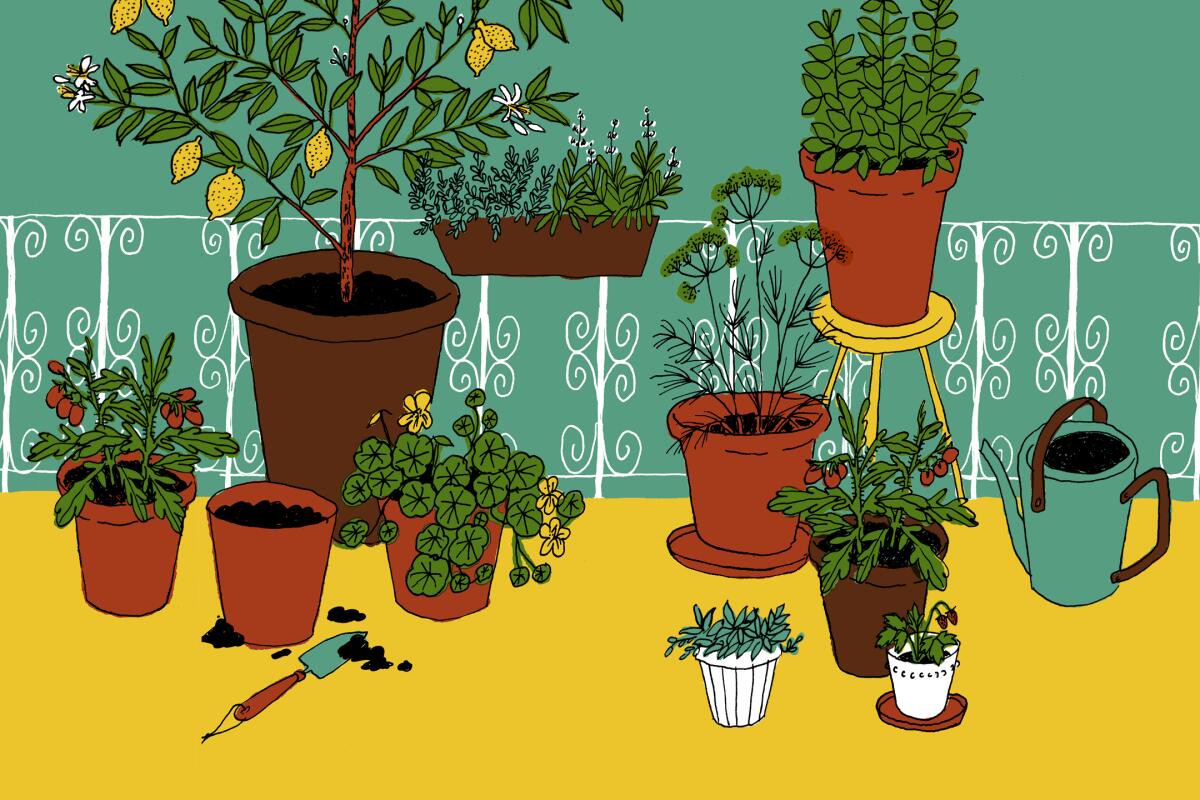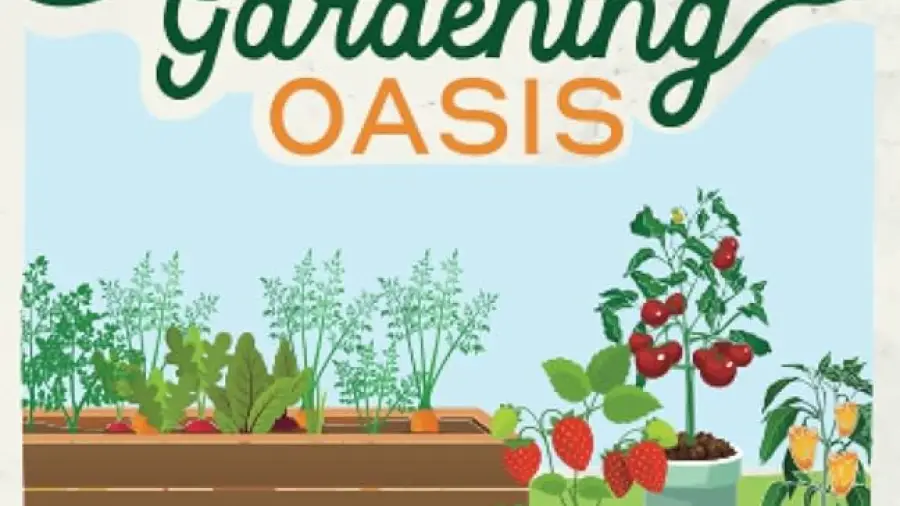Balcony gardening for beginners involves selecting suitable plants and optimizing limited space. It’s an accessible way to cultivate a green thumb in urban settings.
Delving into the world of balcony gardening offers a refreshing escape from the hustle and bustle of city life. It’s an ideal pursuit for those seeking to create a tranquil oasis or yearning to grow their own herbs, vegetables, and flowers.
This pursuit doesn’t require extensive horticultural knowledge; a little dedication and the right guidance can lead to a thriving garden. Proper plant choices, efficient use of space, and consistent care are the keystones of a successful balcony garden. Embracing this green endeavor can provide not only aesthetic pleasure but also the satisfaction of cultivating life in a compact area. Whether it’s your first foray into gardening or you’re looking to adapt your skills to a smaller space, this introduction sets the foundation for a rewarding journey into balcony gardening.
Table of Contents
Why Start A Balcony Garden?
Creating a balcony garden breathes life into your urban living space. It’s a touch of nature right outside your door. Green spots in cities are rare. So, growing plants on your balcony makes your home special. Plants in your outdoor area can also clean the air. This makes your home a healthier place.
Not just beauty, but home-grown veggies and herbs have perks. They lack chemicals found in store-bought food. You get to enjoy freshness that lasts. Imagine plucking tomatoes or basil right before dinner!
| Benefits of Balcony Gardening |
|---|
| Fresh air and a touch of nature |
| Less exposure to store-bought food chemicals |
| Enjoyment from growing your own food |

Credit: www.latimes.com
Assessing Your Balcony’s Potential
Assessing your balcony for gardening is a crucial first step. Check how much sunlight your space gets daily. Different plants need different light levels. Sunny balconies are great for flowers and veggies. Shady spaces may suit ferns or ivy better.
Now, consider the size of your balcony. You want to grow a lot but keep enough space to move. Use vertical planters to save floor area. Install shelves on walls for more plants. Pick pots that fit well together. This helps you grow more and keeps your balcony neat.
| Light Requirement | Plant Type Examples |
| Full Sun | Tomatoes, Roses |
| Partial Sun/Shade | Panies, Begonias |
| Full Shade | Ferns, Ivy |
- Measure your balcony area first.
- Choose planters that save space.
- Place tall plants on the back side.
- Hang plants from the ceiling if you can.
Planning Your Balcony Garden Design
Planning your balcony garden starts with a theme. Choose a style that reflects your taste. You could go tropical, modern, or even edible. Themes guide your choices, from furniture to plants.
- Start with small plants if you’re a beginner.
- Pick plants that grow well in your climate.
- Herbs and flowers are great for starters.
Create a list of plants you love. Think about colors and heights. This list is your plant wishlist. It helps you shop. Remember, not all plants like all climates. Choose plants that can thrive on your balcony.

Credit: medium.com
Selecting Plants For Your Balcony
Selecting the right plants for your balcony requires consideration of the space available. Here are some great options:
- Herbs like basil and mint are easy to grow and useful.
- Succulents demand minimal care and thrive in small pots.
- Flowering plants like petunias brighten up the space.
- Vegetables such as tomatoes can grow in hanging baskets.
Match plants with the right season. Some flowers bloom well in spring or summer. Keep soil moist and provide proper sunlight. Always check plant tags for care instructions.
Essential Tools And Supplies
Embarking on balcony gardening requires a set of basic tools. A durable pair of gloves protects your hands during work. Pruning shears help keep plants in shape. A watering can with a long spout reaches roots easily. For potting and re-potting, spades and trowels are essential. Use containers with drainage holes to prevent waterlogging. Labels help you track your plants’ growth.
Tending plants demands nutrition and proper soil. Organic soil, rich in nutrients, supports plant health. Fertilizers boost growth, but they must suit the plants’ needs. Slow-release fertilizers nourish plants steadily. For organic options, consider compost or manure. Their nutrients enrich the soil naturally over time.
Container Gardening Basics
Starting a balcony garden requires picking proper containers. Containers come in various materials like plastic, clay, and ceramic. Each has its perks. Plastic is light and cost-effective. Clay and ceramic pots are heavy, offering stability for larger plants.
Proper drainage is crucial. Make sure your containers have holes at the bottom. This prevents water from pooling at the roots, which can cause rot. For potting, use a quality potting mix. It’s designed to keep soil aerated and drain well. Avoid using garden soil; it’s too dense for container plants.
Irrigation And Watering Tips For Healthy Plants
Creating a watering schedule for your plants is crucial. Different plants need different amounts of water. For example, cacti require less water than tomato plants. It’s best to research your plant’s specific needs.
Succulents thrive with weekly watering, while leafy vegetables might need water every couple of days. Always check the soil before watering. Moist soil means you can wait, but dry soil calls for hydration.
Self-watering pots and drip irrigation systems are great solutions for consistent watering. They help to keep soil evenly moist and prevent overwatering. Consider installing a simple timer to manage the watering schedule automatically.

Credit: www.amazon.com
Maintaining Your Balcony Garden
To keep your balcony garden thriving, regular upkeep is a must. This includes watering your plants thoroughly but not too much; overwatering can harm them. Make sure to prune your plants regularly to encourage new growth and prevent disease.
- Check plants weekly for dead or dying foliage.
- Use sharp pruning tools for clean cuts.
- Remove yellow leaves promptly to keep plants healthy.
Pest control also plays a pivotal role. Natural options like neem oil or insecticidal soaps work well against pests. Always inspect leaves for bugs and treat them quickly. Remember, healthy plants resist pests better.
| Pest | Natural Remedy |
|---|---|
| Aphids | Soapy water spray |
| Spider mites | Neem oil treatment |
Enjoying Your Balcony Garden Year-round
Balcony gardening thrives with seasonal updates and changes. Choosing plants suited to different times of the year is key. Spring beckons for vibrant flowers, like tulips and daffodils. Summer is ideal for growing herbs and leafy greens. Come autumn, it’s time for chrysanthemums and pansies. Winter may seem bleak, but evergreens and hardy shrubs can survive the chill.
To create a relaxing atmosphere, place comfortable seating and soft lighting. Include a variety of potted plants to enhance the space visually. Incorporate pleasant scents with jasmine or lavender to soothe the senses. Wind chimes or a small fountain can add tranquil sounds. This harmony of elements turns your balcony into a peaceful retreat.
Expanding Your Green Thumb Skills
For those ready to advance their balcony gardening skills, exploring high-level techniques can yield bountiful results. Companion planting is a savvy strategy, ensuring plants that thrive together share space. Vertical gardening is also beneficial, creating room for more greens. Soil amendment practices are vital for optimal plant health and growth.
Access to online forums and communities enriches your gardening journey. Local gardening clubs offer opportunities for exchanging seeds and experiences. Websites are filled with DIY tutorials, while social media groups provide interactive platforms for questions and advice. Use these resources to enhance your balcony oasis.
| Resource Type | Description |
|---|---|
| Forums | Spaces for sharing tips and solving problems. |
| Local Clubs | Meet and learn from nearby garden enthusiasts. |
| Social Media | Connect with a global network of gardeners. |
| DIY Tutorials | Step-by-step guides for garden projects. |
Frequently Asked Questions Of Balcony Gardening For Beginners
What Is The Easiest Plant To Grow On A Balcony?
The easiest plant to grow on a balcony is the cherry tomato, due to its adaptability and minimal care requirements.
What Are The Best Tips For A Balcony Garden?
Select appropriate plants for your climate and sunlight exposure. Use quality, well-draining soil. Utilize vertical space with hanging planters and shelves. Regularly water and fertilize your plants. Ensure sturdy containers to withstand weather conditions.
How Do I Turn My Balcony Into A Garden?
To turn your balcony into a garden, assess the space for sunlight and choose suitable plants. Install planters or pots, add soil and seeds, ensure adequate watering, and monitor plant growth. Use vertical structures for climbing plants to maximize space.
What Veggies Can I Grow On My Balcony?
You can grow lettuce, tomatoes, peppers, herbs, and strawberries on your balcony. Compact, dwarf varieties are best for limited space. Choose containers that fit your balcony size. Ensure adequate sunlight for healthy growth. Regular watering is essential.
Conclusion
Embarking on your balcony gardening journey can transform any small space into a green haven. Start simple, with easy-to-maintain plants, and let your confidence grow alongside your garden. Remember, patience and care are your best tools. Happy planting, and revel in the joy of your blossoming oasis!
